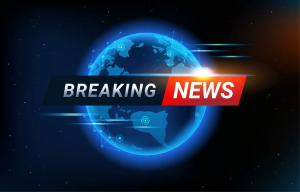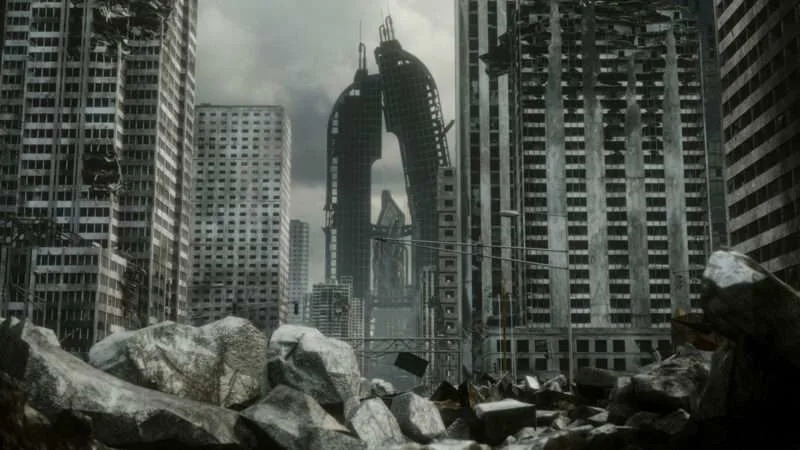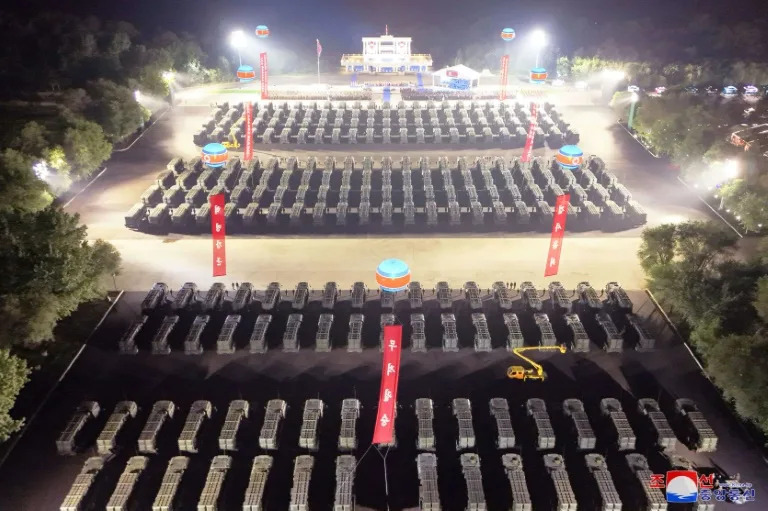-
China has built upon decades of earlier failures to field a growing submarine force.
-
Its attack boats and boomers have grown much quieter and harder to track.
-
The fleet build-up shows the importance China believes subs will have in future conflicts.
Two days before US Secretary of State Antony Blinken arrived in China this April for meetings with the country's leader and other high-ranking Chinese officials, China's People's Liberation Army Navy released footage of a nuclear submarine firing a ballistic missile.
The video, which also showed three other submarines making up the carrier Shandong's strike group, was released as part of celebrations marking the 75th anniversary of the country's navy. Two months after its release, a Chinese ballistic missile submarine surfaced in the Taiwan Strait, near Taiwan's Kinmen islands.
The publicity and show of force are the latest evidence of China getting serious about its ambitions to build up its nuclear submarine fleet.
China has built upon decades of earlier failures to field a growing submarine force whose boats are more capable against the US's advanced subs in a sign that China believes its ambitions may come down to an undersea fleet that can sink rivals and deter enemies from nuclear attack.
Its vast shipbuilding industry is cranking out nuclear submarines at a fast clip, with new designs also in the works.
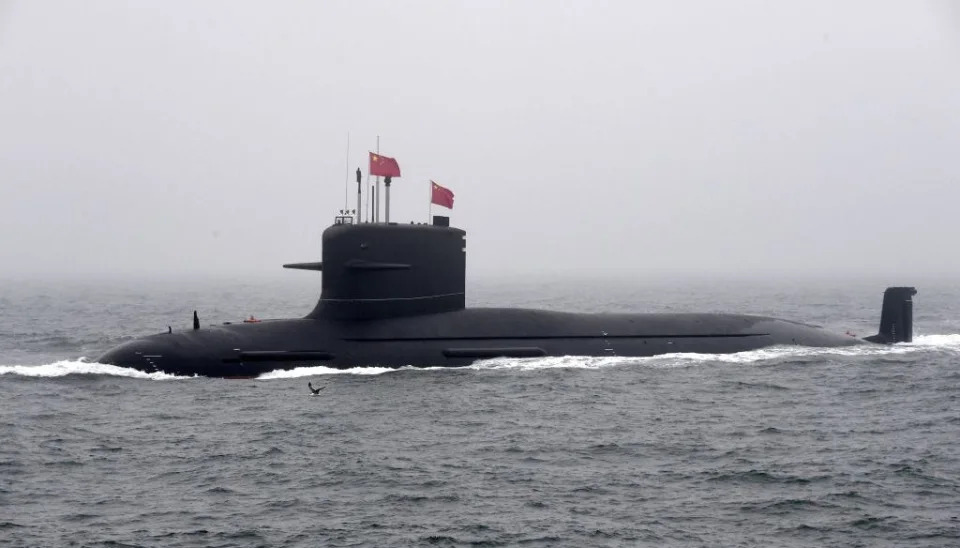
Nuclear attack submarines
China's interest in nuclear submarines dates as far back as the mid 1950s, immediately after the US Navy commissioned the world's first nuclear submarine, USS Nautilus. But with the Soviet Union unwilling to transfer nuclear propulsion technology to China, the Chinese had to start from scratch.
China's first attempt at creating a nuclear-powered submarine was focused on developing a nuclear attack submarine (classified as SSN) because designing a nuclear-powered ballistic missile submarine would have required developing a naval reactor, submarine-launched ballistic missile, and underwater launching system all at once.
The effort was given the green light in 1958, but construction on the first boat would not begin until 1968. Though launched in 1970, construction was further delayed by the upheaval of the Cultural Revolution, and the vessel was not commissioned until 1974.
Known as the Type 091, it was designated as the Han-class by NATO. Measuring from 321 to 350 feet long and displacing over 5,000 tons submerged, it was armed with six torpedo tubes at the bow that could fire at ships or other submarines. In all, five Type 091 SSNs were built between 1968 and 1990.
The Type 091 class was nowhere near as combat-capable as its peers, largely due to the fact that they were the first nuclear-powered submarines China ever built, and because they had no assistance in doing so; the sub's reactor must be stable enough to continuously provide mechanical power to turn its propellor and to generate its electricity. These subs were substantially louder than most of their contemporaries and were viewed as considerably outdated.
Type 091 subs did undertake multiple deployments and were involved in a number of incidents. They also received upgrades that improved their performance in the early 2000s. Ultimately, however, they served more as stepping stones towards future nuclear subs than as front-line assets. Two of the five subs have since been retired.
China's second-generation SSN, the Type 093, proved a drastic improvement over its predecessor. Designated the Shang-class by NATO, development on the subs originated in the 1980s, but construction on the first sub only began in 1998, four years after a decision by Chinese leaders to proceed with building a new class of SSNs to better face the challenges of the coming century.
Unlike the Type 091, the Type 093 benefitted from technology transfers from Russia. The Russian Rubin Design Bureau also reportedly consulted with the Chinese on the class's overall design. By 2003, the first sub was launched, and in 2006, it was commissioned into service.
At 351 feet long and with a displacement of about 7,000 tons, the Type 093s have six torpedo tubes capable of firing wired, acoustic, and wake-homing torpedoes. They are also capable of launching YJ-18 and YJ-82 anti-ship cruise missiles, and are equipped with bow and flank-mounted sonars.
Seven Type 093 SSNs have been built across three variants; two Type 093s, four Type 093As, and at least one Type 093B. The Type 093A is an upgraded design with improved quieting — noise is one of a submarine's biggest giveaways, which can be detected by passive sonar and hydrophones. The Type 093B is a further upgraded version, equipped with a pump-jet propulsor and the ability to deploy a towed sonar array. It is expected to play more of a land-attack role with long-range cruise missiles.
AfriPrime App link: FREE to download...
https://www.amazon.com/Africircle-AfriPrime/dp/B0D2M3F2JT
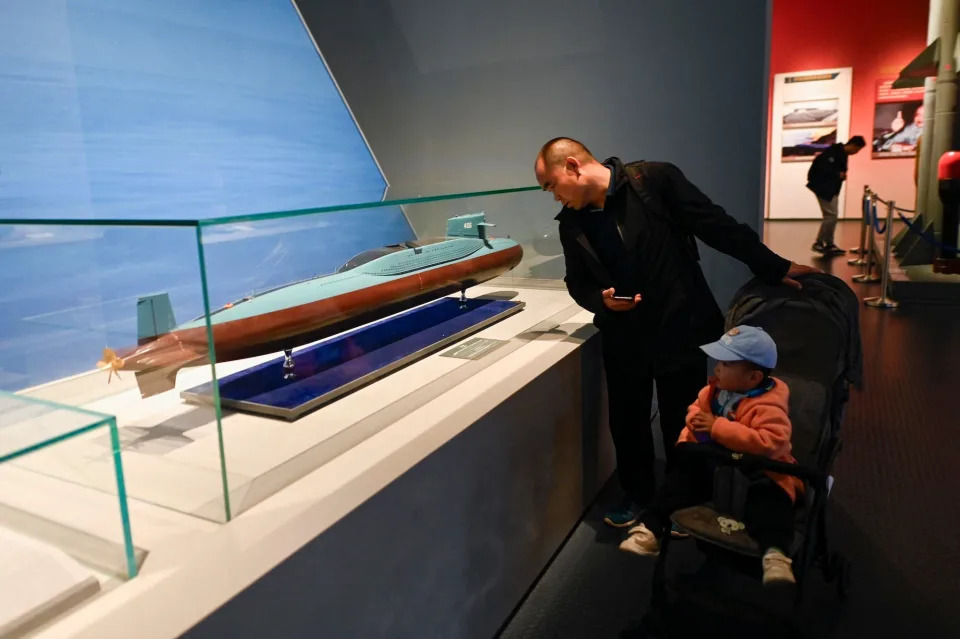
Nuclear ballistic missile submarines
Also known as "boomers" and given the classification "SSBN," nuclear ballistic missile submarines are perhaps the greatest nuclear deterrent any nation can possess. Intended to stay submerged for months at a time on a patrol, they carry nuclear missiles with long ranges and preserve a country's ability to retaliate if they are attacked with what's known as a second-strike capability. Deployed submarines are much more difficult to destroy compared to ICBM silos and strategic bombers.
China's first SSBN, the Type 092 (designated Xia-class by NATO), was based on the Type 091 SSN. Launched in 1981 and commissioned in 1983, only one was built. Measuring about 393 feet long and with a submerged displacement of about 8,000 tons, it was armed with six torpedo tubes and 12 launch silos for SLBMs.
Like the Type 091, the problem-plagued Type 092 is regarded as little more than a test case.
Despite being commissioned in 1983, it was only active from 1987 onwards. It had a terrible safety record, with reports of it suffering from radiation leakage, and was also considerably loud — so much so that there was little doubt it would be detected by its adversaries.
The SLBM it carried, the JL-1, was also comparatively unimpressive. Not fully operational until 1988, it was unable to carry multiple independently targetable reentry vehicles (MIRVs), and instead only carried a single nuclear warhead ranging from 200 – 300 kilotons. Its range was also only about 1,056 – 1,335 miles, which severely limited its ability to strike the most relevant targets.
Consequently, the Type 092 never made a single deterrent patrol, and instead spent most of its time either within Chinese territorial waters or docked in Chinese naval bases. For all its inadequacies, however, the Type 092 did act as something of a stepping stone for the development of China's next SSBN, the Type 094.
Designated as the Jin-class by NATO, the Type 094 is a vast improvement over its predecessor, with a new propulsion system, improved electronics and sensors, and, perhaps most crucially, lower sound levels.
At 450 feet long and with a submerged displacement of around 10,000 tons, the sub's armament is similar to the Type 092 (six torpedo tubes and 12 SLBM launchers), but it carries a different SLBM: the JL-2.
Capable of carrying a one megaton nuclear warhead or 3-8 MIRVs, the JL-2 was introduced in 2015, and has an estimated range of between 4,970 - 5,592 miles. In 2022, it was reported that China began deploying the new JL-3 SLBM on its Type 094s.
Able to carry a single 1-megaton nuclear warhead and possibly multiple MRVs, the JL-3 is believed to have a range of over 6,200 miles — putting the American West Coast in range of Chinese SLBM's for the first time.
By comparison, US Navy Ohio-class SSBNs are each armed with 20 Trident II SLBMs, which are believed to have a minimum range of 1,242 and a maximum range of 7,456 miles.
Six Type 094s have been constructed, with the first laid down in 2001. The two most recent subs are of the Type 094A upgraded subvariant. The class represents China's first credible sea-based nuclear deterrent, with the US Department of Defense reporting in 2022 that China "is conducting continuous at-sea deterrence patrols" for the first time.
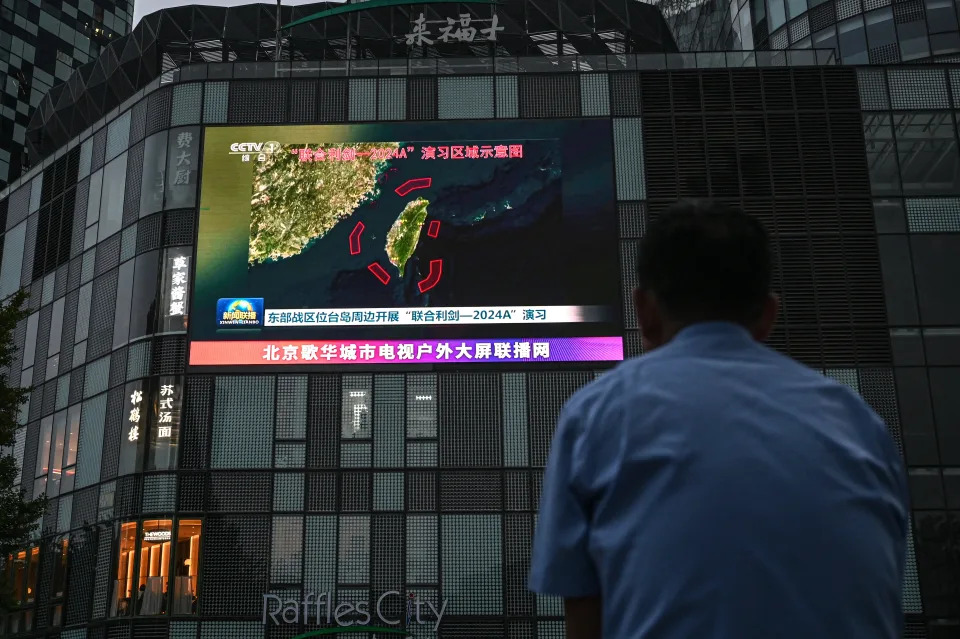
Numbers, sophistication, and use
The growth of China's nuclear submarine fleet is impressive considering the timeline. According to the US Department of Defense, China has constructed 12 nuclear submarines in the last 15 years.
And the growth isn't just constrained to numbers — it also includes capabilities, with the newest Chinese nuclear submarines closing the gap with their American counterparts. The Type 093, for instance, is believed to be about as quiet as the US Navy's current Los Angeles-class SSNs.
China's fleet of diesel-electric powered submarines is also getting larger and more sophisticated, with recent upgrades aimed at increasing stealth and time underwater being implemented on their newest Type 039 class subs.
The growth in numbers and sophistication reflects the importance China believes submarines, particularly nuclear submarines, will have in potential future conflicts with its regional and global adversaries.
Chinese SSNs, with their ability to stay under water for long periods of time, could act as hunter-killers of American and allied ships and submarines in the waters east of Taiwan, possibly pushing them towards the Second Island Chain.
Chinese SSBNs, meanwhile, would likely operate from the safety of their bastions in the South China Sea, ready to launch their SLBMs whenever required. They could also operate in the Sea of Japan, putting even more of the continental US in range of their missiles.
All the while, they could be aided by their fleet of diesel-electric attack subs and the Underwater Great Wall, a network of sensors embedded on the floor of the East and South China seas aimed at detecting rival subs.
But China's nuclear subs still have limitations. The Type 094, for instance, is reportedly louder than the 1970s-era Russian Delta III-class SSBN and about twice as loud as its current American or Russian counterparts.
China's nuclear submarine ambitions remain undiminished. A new class of SSBN, the Type 096, has been in development for years and is expected to be operational by 2030. A new SSN, the Type 095, is also planned as well.
AfriPrime App link: FREE to download...
https://www.amazon.com/Africircle-AfriPrime/dp/B0D2M3F2JT
Nuclear War: A Scenario Is a Disaster Porn Thriller
The end of the world takes less than two hours in Annie Jacobsen's Nuclear War: A Scenario. It begins one spring day when a nuclear intercontinental ballistic missile (ICBM) erupts from a mobile launcher in North Korea. Before it hits the Pentagon, a North Korean submarine in the Pacific fires a second nuclear salvo at California. Neither missile is intercepted. Within 40 minutes of the first launch, millions of Americans are dead on both coasts.
The U.S. retaliates by firing a barrage of missiles from underground installations in the Mountain West and from submarines in the Pacific. Russia, aware that the United States has been attacked but unable to communicate with the U.S. president, mistakes the launch of the American ICBMs for an attack on Moscow and fires its nuclear weapons at the U.S. and its NATO allies, which then retaliate against Russia.
North Korea finishes the play by detonating a nuclear bomb attached to a satellite over North America, generating a series of electromagnetic pulses that destroy the United States' three main electrical grids and plunge the country back into the early 19th century.
The entire scenario—a word Jacobsen uses frequently, first clinically and then almost as a merciful reminder that the events in her book are entirely speculative—lasts roughly as long as an episode of Jack Ryan, for which Jacobsen has been both a consultant and a writer.
In this span, hundreds of millions of people die instantly. Hundreds of millions more begin to die from radiation poisoning and third-degree burns, then starvation, dehydration, and exposure. The war ends up killing 2 billion in total. Numerous monuments, buildings, and works of art across five continents are destroyed in finger-snap intervals. The Vatican is rubble; the pope is ash. The Louvre, St. Basil's Cathedral, the Empire State Building, Hollywood, and Buckingham Palace explode and shatter like movie props.
In case her readers are not sufficiently disturbed by the rapid immiseration of the human race, Jacobsen informs us on page 212 that animals will also suffer in a nuclear war. At the National Zoo in Washington, D.C., four miles north of ground zero, "Asian elephants, western lowland gorillas, and Sumatran tigers writhe and bellow in their cages and their pens. Most have charred skin hanging off their bodies, their hair on fire."
After this very short, very awful conflict, nothing works and no place is safe. Most of the water is radiated, and dead bodies are everywhere. The sun disappears behind a cloud of particulate matter that hangs between the Earth and the rest of the solar system, plunging the planet into a short but devastating ice age. When the sun returns, it does so absent most of the ozone layer, making solar rays deadly to human beings, very few of whom are left. "Survivors," she writes, "must move underground. Into the damp and the dark. Into spaces infested with spiders and insects, like sucking louse." To paraphrase Nikita Khrushchev, parents of day care–age children will envy the dead.
What evidence is there that the launch of two North Korean nukes would catalyze the death of billions and the end of civilization as we know it?
"The scenario I chose was pieced together from interviews I did with 46 on-the-record sources and dozens of sources on background, and I ran by them various scenarios to come up with the most plausible scenario that unfolds once it begins," Jacobsen told Politico's Kathy Gilsinan. "And this is what I came up with. And so far, I haven't had anyone who actually runs these scenarios for NORAD take issue with the choices that I've made and the way in which the decision trees unfold, which makes it all the more frightening."
That kind of sensationalism is Jacobsen's calling card, as is her method of "piecing together" interviews with various military types to form a larger picture. The combination has led to some wild swings and proportionately big misses. In 2011's Area 51: An Uncensored History of America's Top Secret Military Base, Jacobsen chronicled the development of American spy planes in the Nevada desert and the U.S. government's efforts to suppress civilian interest in its homegrown UFOs. The Pulitzer-winning historian Richard Rhodes took to The Washington Post to declare it an "adequate if error-ridden job" built on the "classic investigative method of interviewing dozens and dozens of worker bees from engineers to security guards and piecing their stories together." He had no patience for Jacobsen's willingness to endorse the theory "that Auschwitz butcher Dr. Josef Mengele, the German aircraft-designing brothers Walter and Reimar Horten and Soviet dictator Josef Stalin conspired back in the late 1940s to scare America silly with a Nazi-Soviet flying saucer crowded with wobbly 13-year-olds with large, surgically altered heads." He is referring, of course, to the supposedly alien spacecraft that crashed in 1947 near Roswell, New Mexico.
Despite such criticism, Area 51 sold well, and Jacobsen stood by her reporting on the Roswell theory just as she now stands by her speculative tick-tock of a future nuclear war. If anything, her thesis this time is even more unfalsifiable. Maybe Kim Jong Un really is the kind of lunatic who would destroy his own people to smite the U.S. for publishing a NASA satellite photo of the Korean Peninsula at night, in which North Korea is shrouded in darkness while South Korea is ablaze with electricity. (This is the closest Jacobsen comes to suggesting a cause for the dictator's "Bolt out of the Blue" nuclear attack.) Maybe an American president, pressured by his military advisers, really would launch 82 nuclear warheads in response, genociding the North Korean people, most of whom are essentially slaves. Maybe Russia's leaders, convinced that the U.S. is itching to do to Vladimir Putin what it did to Saddam Hussein, really would lean into its paranoia and nuke the U.S. before confirming whether it was actually under attack.
Before too many chapters, a reader may find themselves echoing the lament of Ebenezer Scrooge during his visit to the future with the Ghost of Christmas Yet to Come: "No more! No more! I don't wish to see it. Show me no more!"
Unlike Scrooge, who was able to stave off damnation with a fat goose and better PTO, the average reader is no more capable of affecting nuclear proliferation than stopping tectonic plate movement. But there are less consternating ways to engage with Jacobsen's book, which is already being adapted for the big screen. While dread-inducing as a risk assessment, it is a fantastic entry in the genre of disaster porn. New Yorker writer Kathryn Schulz set the standard for this category with her breathtaking 2015 piece, "The Really Big One," about an earthquake that could destroy the western half of the United States. More staid entries include a briefly viral 2014 geology paper modeling the Midwest-destroying effects of a Yellowstone supereruption. And then, of course, there is the pi-long shelf of climate change projections. Between Hollywood and the eggheads, science-based eschatology is very hot right now.
I do not mean to jest about the specter of nuclear holocaust. As Jacobsen makes clear, modern nuclear weapons, of which there are several thousand between just the U.S. and Russia, are hundreds of times more devastating than the two bombs America dropped on Japan to end World War II in the Pacific. Detonating just one thermo-nuclear device would not merely destroy everyone and everything in a multimile radius: The ensuing fallout would salt the Earth for miles and miles beyond ground zero.
So where can one find solace? Jacobsen offers none, but I thought of Kim Jong Un as I finished her book. The young dictator is reportedly a lover of French wines and Swiss cheese; he is said to enjoy the company of attractive women; his bulletproof personal train allegedly has pink leather seats; he recently built eight new luxury mansions. Is he eager to give all that up for a hole in the ground and an empire of disgruntled cave dwellers? Does he have enough Bordeaux to survive a nuclear winter? Are the military leaders in his entourage ready to give up their lavish lifestyles? What about Putin and his inner circle? How, I wonder, do they feel about lice?
The leader of every nuclear power is unique, but they all have it good. May each of them read Jacobsen's book and exclaim, "Show me no more!"
AfriPrime App link: FREE to download...
https://www.amazon.com/Africircle-AfriPrime/dp/B0D2M3F2JT
China says it is 'seriously concerned' about US nuclear strategic report
China is seriously concerned about a report that said the United Stated approved a nuclear strategic plan to focus on China's rapid expansion in its nuclear arsenal, the Chinese foreign ministry said on Wednesday.
"The U.S. is peddling the China nuclear threat narrative, finding excuses to seek strategic advantage," a Chinese foreign ministry spokesperson said.
According to a report by the New York Times, U.S. President Joe Biden approved in March a highly classified nuclear strategic plan that focused on China's quickly growing arsenal, but also seeks to prepare the U.S for possible coordinated nuclear challenges from China, Russia and North Korea.
"China is seriously concerned about the relevant report, and the facts have fully proved that the United States has constantly stirred up the so-called China nuclear threat theory in recent years," said Chinese foreign ministry spokesperson Mao Ning at a regular press briefing.
The White House said on Tuesday that the classified nuclear strategic plan approved by Biden this year is not a response to a single country or threat.
The U.S. has consistently pointed to China's expansive and growing nuclear weaponry. An annual report by the Pentagon last October said China had more than 500 operational nuclear warheads in its arsenal, and will probably have over 1,000 warheads by 2030.
North Korea condemns new US nuclear strategic plan report
North Korea's official Korean Central News Agency shows tactical ballistic missile launchers on parade in Pyongyang before being transferred to frontier military units.
North Korea vowed Saturday to advance its nuclear capabilities, reacting to a report that the United States had revised its own nuclear strategic plan.
The country will "bolster up its strategic strength in every way to control and eliminate all sorts of security challenges that may result from Washington's revised plan", the official Korean Central News Agency (KCNA) reported.
The New York Times reported this week that a US plan approved by President Joe Biden in March was to prepare for possible coordinated nuclear confrontations with Russia, China and North Korea.
The highly classified plan for the first time reorients Washington's deterrent strategy to focus on China's rapid expansion in its nuclear arsenal, the Times said.
KCNA said North Korea's foreign ministry "expresses serious concern over and bitterly denounces and rejects the behavior of the US".
It added North Korea vowed to push forward the building of nuclear force sufficient and reliable enough to firmly defend its sovereignty.
Pyongyang and Moscow have been allies since North Korea's founding after World War II and have drawn even closer since Russia's 2022 invasion of Ukraine.
The United States and Seoul have accused North Korea of providing ammunition and missiles to Russia for its war in Ukraine.
Pyongyang, which has declared itself an "irreversible" nuclear weapons power, has described allegations of supplying weapons to Russia as "absurd".
However, it did thank Russia for using its United Nations veto in March to effectively end monitoring of sanctions violations just as UN experts were starting to probe alleged arms transfers.
China, also a key ally of North Korea, presents itself as a neutral party in Russia's offensive on Ukraine and says it is not sending lethal assistance to either side, unlike the United States and other Western nations.
But it is a close political and economic ally of Russia, and NATO members have branded Beijing a "decisive enabler" of the war.
Moscow has looked to Beijing as an economic lifeline since the Ukraine conflict began, with the two boosting trade to record highs as Russia faces heavy sanctions from the West.
AfriPrime App link: FREE to download...


